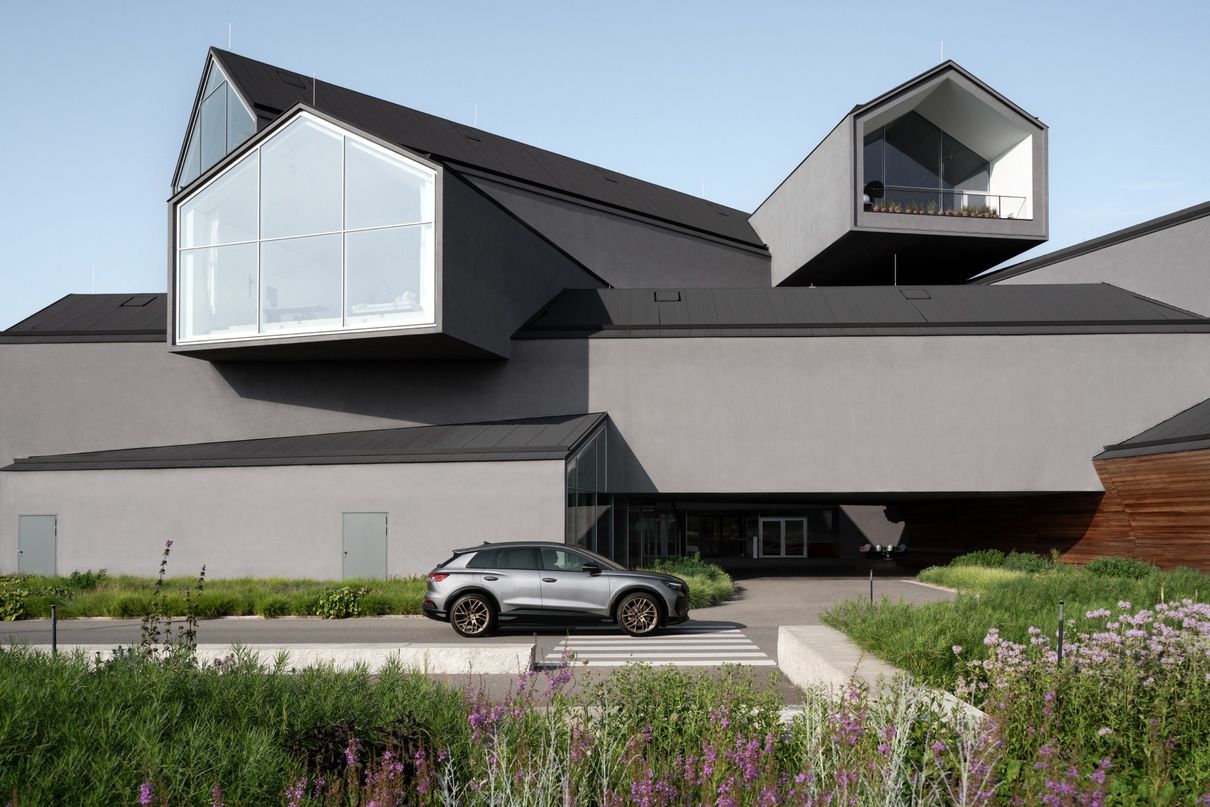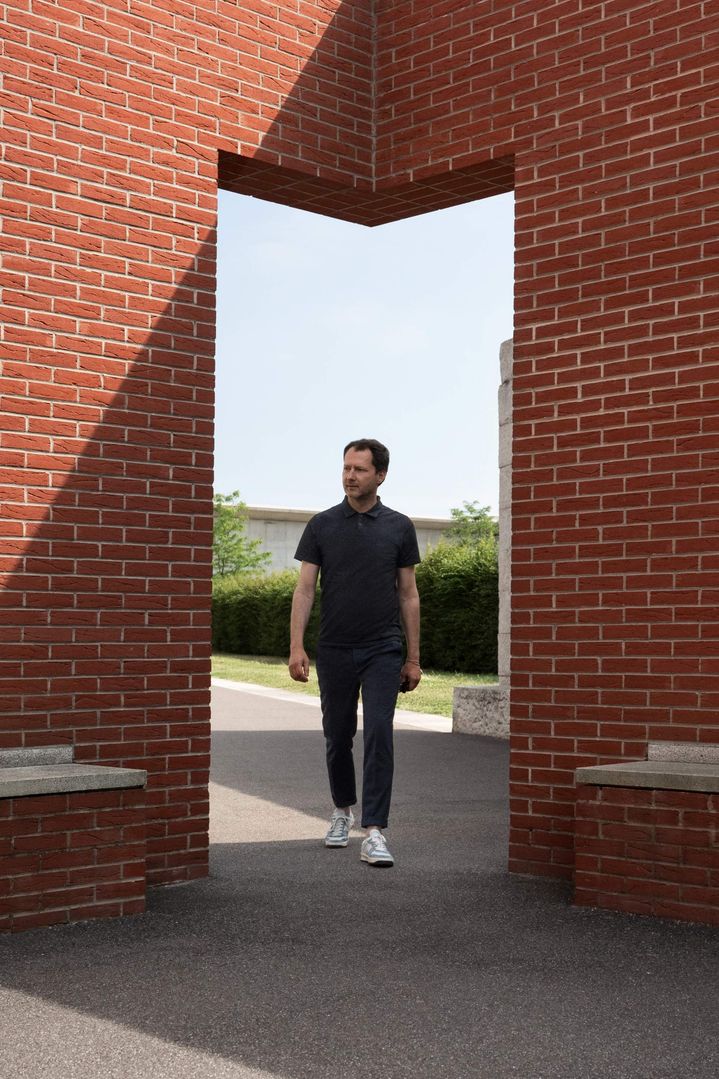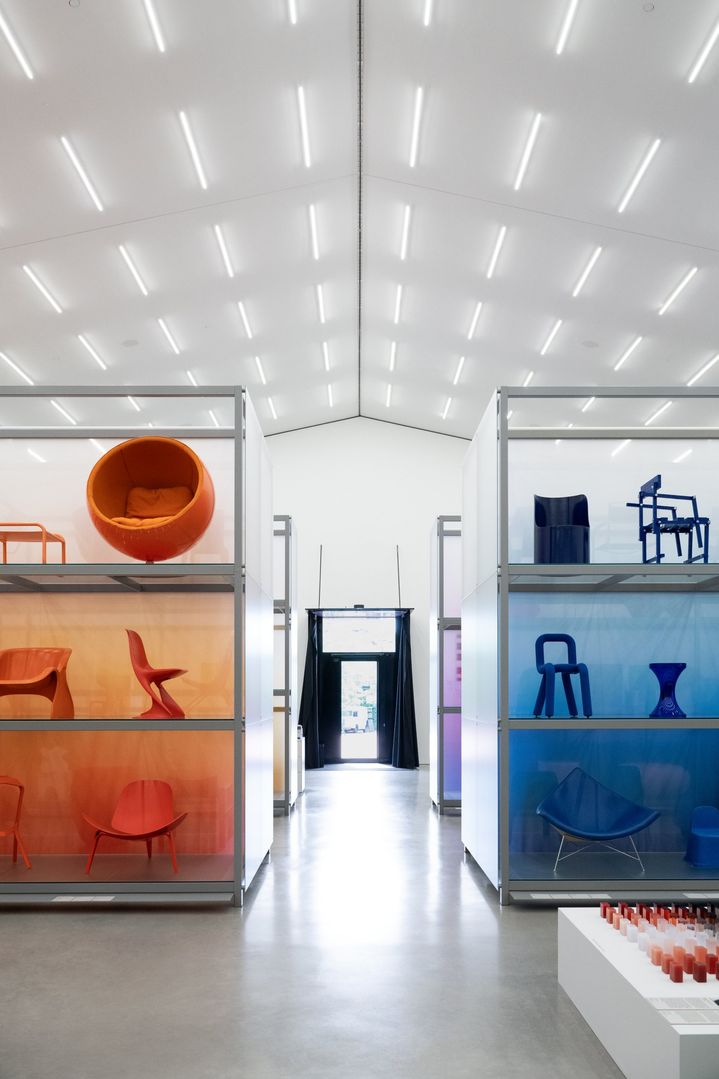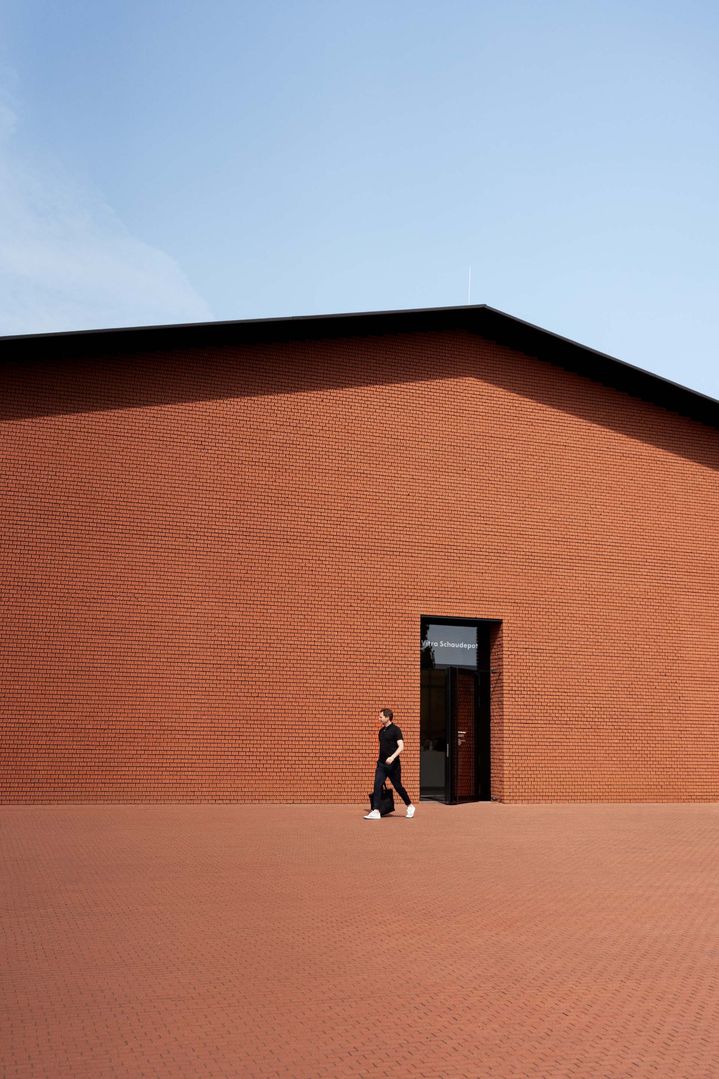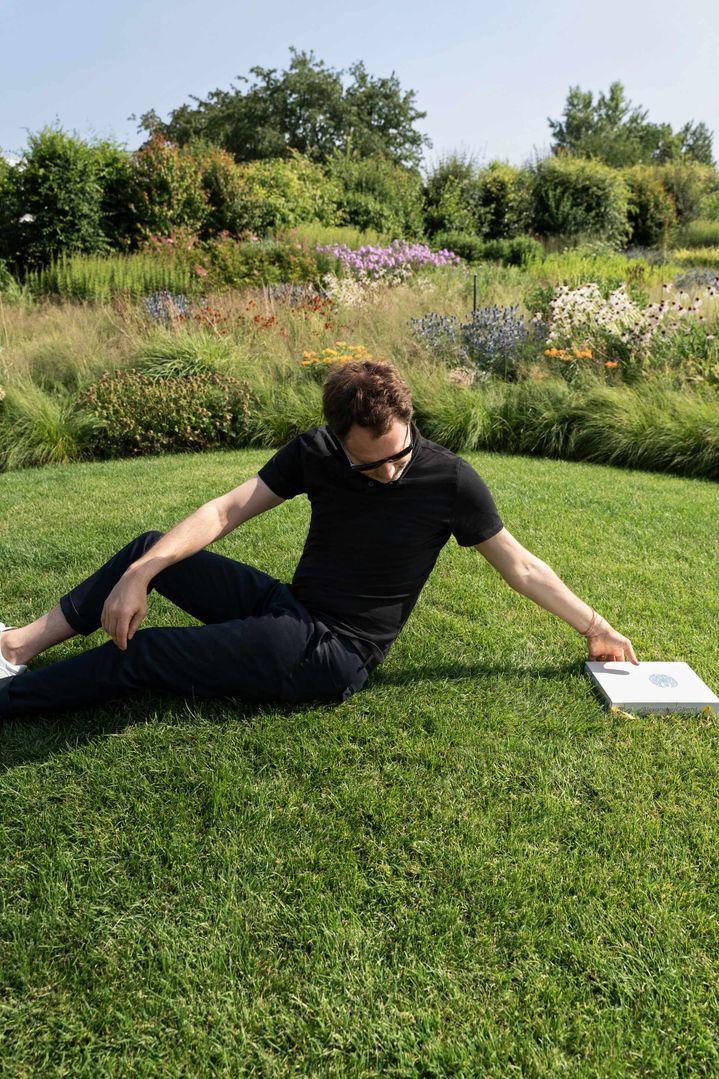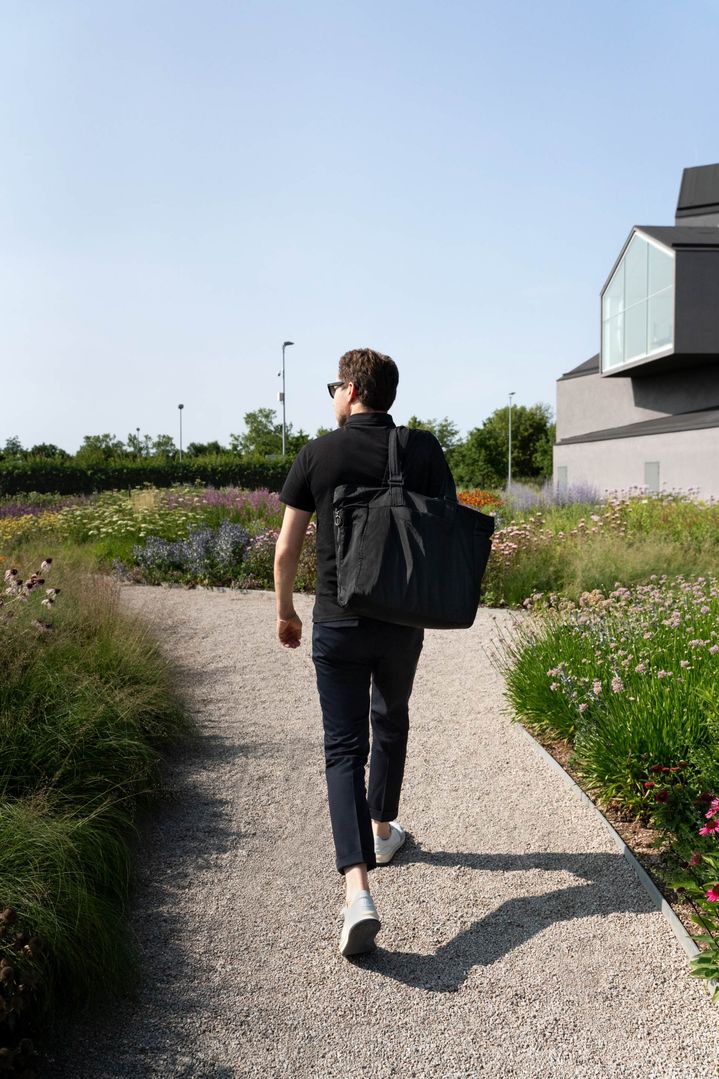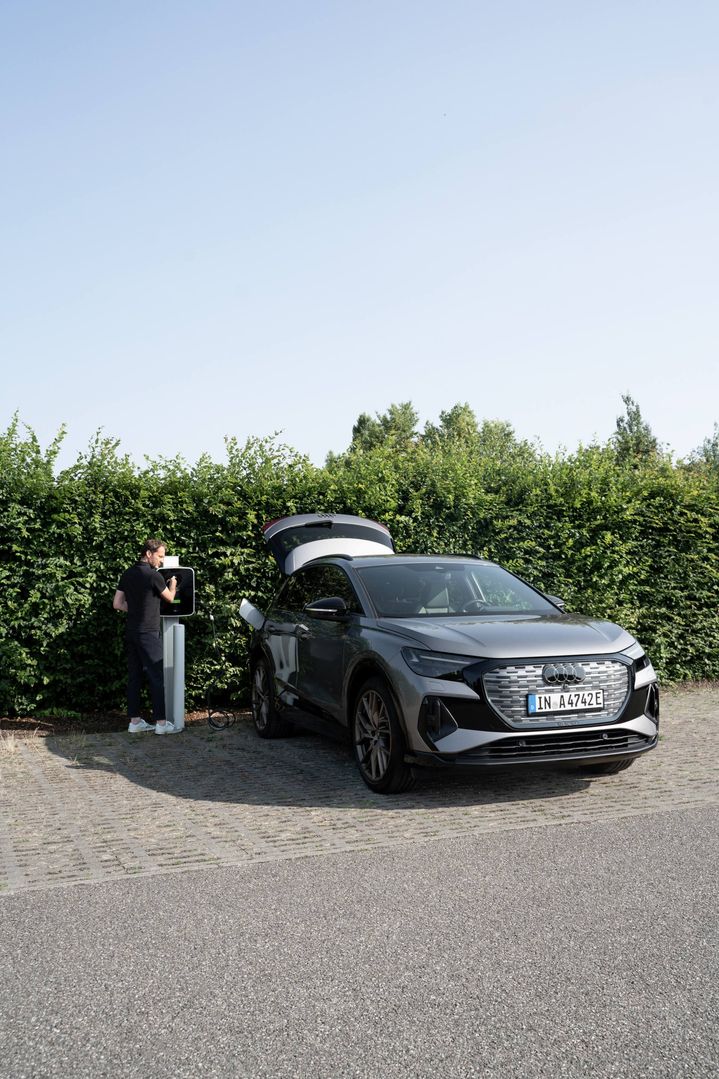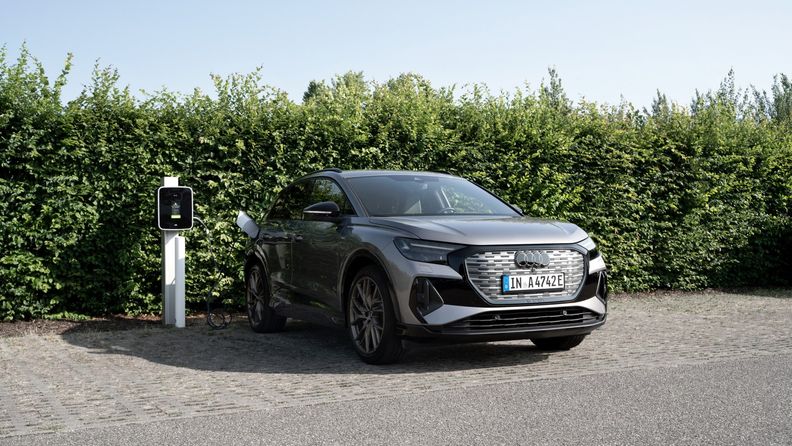“Colours are visual statements”
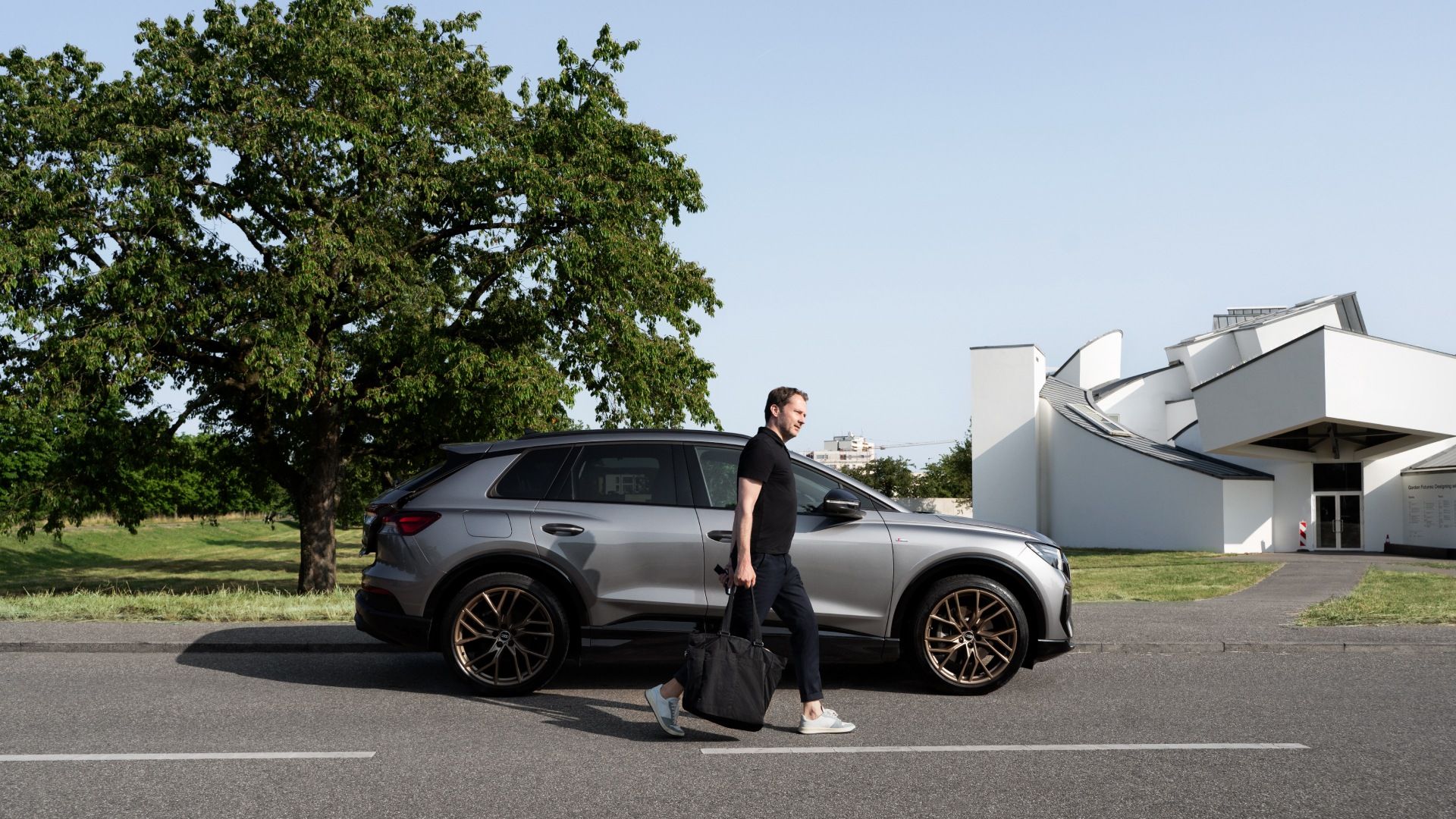
Audi Q4 e-tron: Power consumption (combined) in kWh/100 km: 19.5–16.2CO₂ emissions (combined) in g/km: 0CO₂ emission class: A
Audi Q4 e-tron: Power consumption (combined) in kWh/100 km: 19.5–16.2CO₂ emissions (combined) in g/km: 0CO₂ emission class: A
Every week, Mateo Kries commutes between the hectic streets of Berlin and the idyllic scenery of Weil am Rhein. Here, in the far southwest of Germany, you will find one of the world’s leading design museums: the Vitra Design Museum. Kries, an art historian, curator and author, has worked for the design institution for more than half of his life – today he acts as director of the museum. So, it’s quite natural that he looks at everything from a design perspective, not least when it comes to cars: “It’s my professional deformation that I perceive cars as sculptures, and all other everyday objects as well”, Kries admits, laughing. In Weil am Rhein he drives the Audi Q4 e-tron, and in his private life he gets behind the wheel of the Audi Q8 e-tron².
When it comes to design and colours, Kries is a fan of minimalism. He certainly does not miss all the buttons and switches that once used to be in the vehicles. On the contrary. “The responsiveness of the touch screens in the e-tron models is great, everything works at the touch of a finger – it’s a really neat combination of digital and haptic technology.” Less design is more, according to Kries. “A delicate, angular and square design offers more clarity in today’s world of high visual stimulation,” he explains as he walks through the Schaudepot at the Vitra Design Museum. For its annual presentation, which will be on display until May 2024, the Schaudepot has enlisted Dutch designer Sabine Marcelis to create an installation entirely devoted to colour – which also plays a significant role in the design of vehicles.
“Cars are an integral part of our entire visual environment.”
“For me, automotive design can be compared to choosing your outfit every day,” Kries explains. You wouldn’t wear your yellow or red sweater every day, which is why Kries also prefers timeless, muted tones in the automotive industry. “At the end of the day, cars are an integral part of our entire visual environment,” he observes. The Audi Q4 e-tron in Weil am Rhein is Typhoon Grey, which Kries describes as a particularly layered colour. “The special thing about this colour is that new reflections will appear, depending on the angle and the light,” Kries explains.
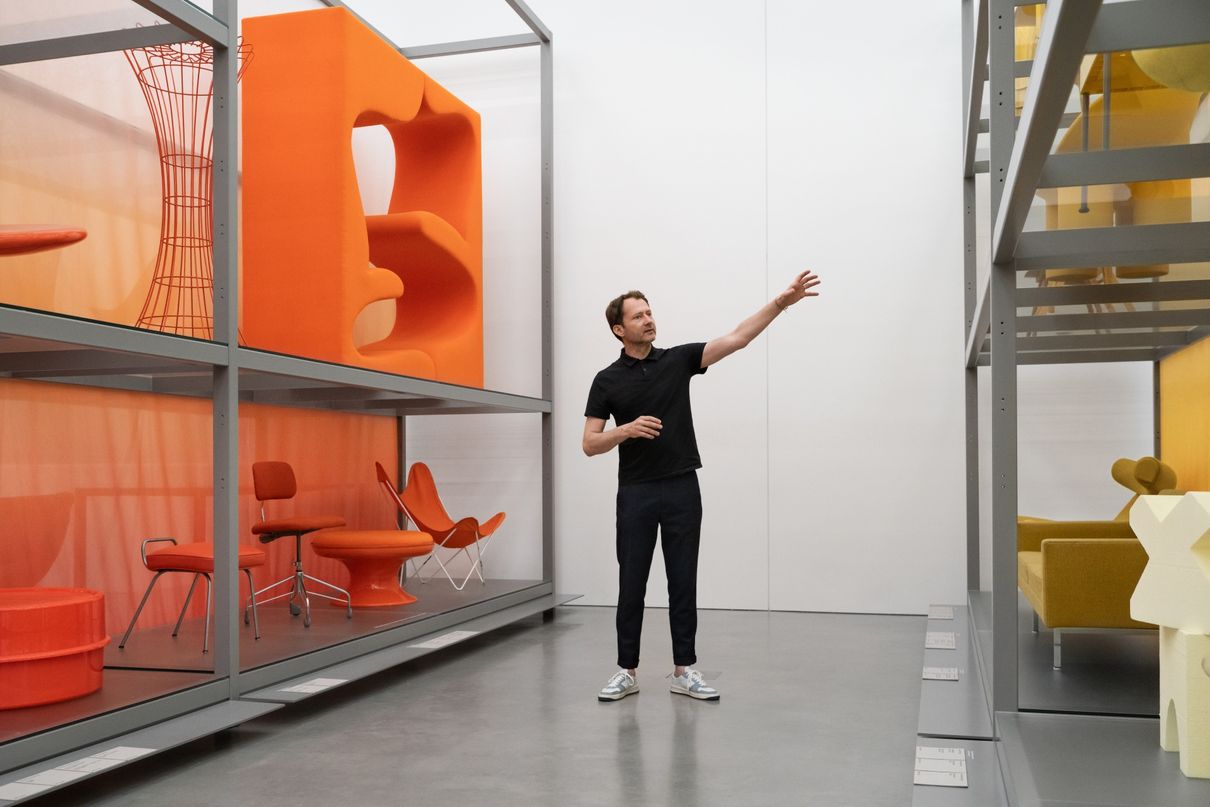
Actually, his favourite colour is green. He associates it with nature and plants. But he would only pick it for his car if he lived in the countryside. “Colours are visual statements, they are often tied to certain statements,” says Kries. “So, driving a green car in an urban environment like Berlin, for example, could be stating that you’re a forester or an estate owner.” But when it comes to the interior, he would like designers to be more experimental with colours, as this will have a greater impact on the well-being of the passengers. “I would imagine that seats in green or yellow tones or an interior dipped in pastel colours could be popular with the customers, as it adds to a pleasant atmosphere.”
“There’s something futuristic about it.”
Two cities, two cars: Mateo Kries lives in Berlin and regularly commutes to Weil am Rhein, where he runs the Vitra Design Museum. For him, the transition toward e-mobility was long planned and only logical. He sees it as a more sophisticated, but also simpler way of mobility in the best sense of the word.
Three questions about electromobility for Mateo Kries
01. Does e-mobility need some kind of signal colour?
I noticed that electric cars already come in different colours – quite often they are two-toned. That has become some kind of signal for electromobility. In my opinion, however, electromobility does not need to be set apart by colour. On the contrary, that would be the wrong approach because it seems artificial.
02. What was your biggest surprise when you first switched from a combustion engine vehicle to an electric car?
Quite clearly the background noise. I find it very pleasant to drive electrically. When traveling with my three kids, there’s a lot going on in the car anyway. In addition, electric mobility seems more refined, because there’s no longer such a mess of metal and hoses under the bonnet. The mechanical aspect is just not that important anymore.
03. What’s your favourite detail of the Audi Q4 e-tron or Audi Q8 e-tron?
I quite like the digital wing mirrors on the Audi Q8 e-tron. My wife, an artist, even had the idea to create an installation with them – the two little screens in the door where you can see cyclists and pedestrians passing by, look like something out of a feature film. It seems a bit surreal at first, but there’s something futuristic about it.
Audi Q4 e-tron: Power consumption (combined) in kWh/100 km: 19.5–16.2CO₂ emissions (combined) in g/km: 0CO₂ emission class: A
Audi Q8 e-tron: Power consumption (combined) in kWh/100 km: 25.3–20.1CO₂ emissions (combined) in g/km: 0CO₂ emission class: A
Audi Q4 e-tron: Power consumption (combined) in kWh/100 km: 19.5–16.2CO₂ emissions (combined) in g/km: 0CO₂ emission class: A
Audi Q8 e-tron: Power consumption (combined) in kWh/100 km: 25.3–20.1CO₂ emissions (combined) in g/km: 0CO₂ emission class: A
